
table of contents
- Indoor trees up to 150 cm
- Up to 200 cm growth height
- Over 200cm
- frequently asked Questions
Plants are the best way to bring nature into your home. A tree as a houseplant can also give any room a unique atmosphere. We recommend these 17 indoor trees.
In a nutshell
- not every tree is suitable for housing
- Indoor trees mainly from the tropics
- sufficient space and light required
- Select site conditions according to natural needs
Indoor trees up to 150 cm
elephant foot (Beaucarnea recurvata)
The special feature of this tree is the thickened foot, which is actually reminiscent of an elephant's foot. It serves as a water reservoir, so that it can do without watering for a long time.
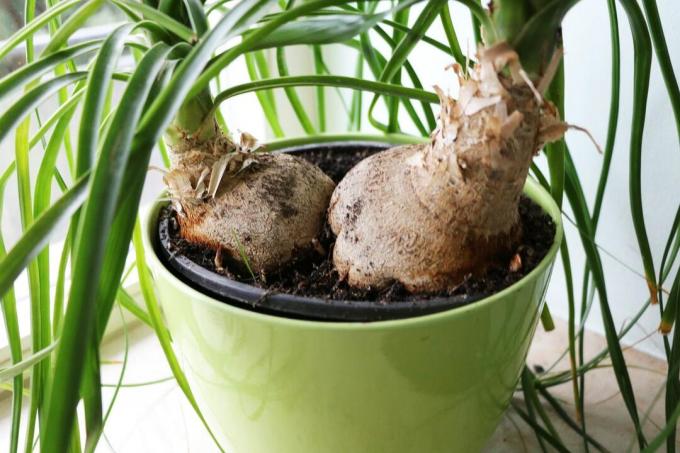
- grows slowly, maximum 150 cm
- long overhanging leaves, sharp leaf edges
- at least five hours of light per day
- high humidity, constant temperatures of about 20 degrees
Notice: This houseplant is considered weak poisonous.
Pinnate Aralia (Polyscias)
This decorative indoor tree forms a beautiful tree silhouette, but rarely blooms indoors.

- seldom taller than 130 cm, 40 to 60 cm wide
- only grows slowly
- bright to semi-shady locations, high humidity
- year-round temperatures of 18 to 22 degrees
- heart-shaped or pinnate leaves, unicolored or multicolored
Indoor cypress (Cupressus macrocarpa 'Goldcrest Wilma')
It is one of the few conifers that are also suitable for keeping in an apartment. What is special about this tree as a houseplant are the light green, refreshingly lemony-scented needles.

- compact, spindle-shaped growth
- up to 90 cm high
- bright, airy location without direct sun
- Temperatures of 5-25 degrees
- the cooler, the less watering
Attention: This plant is highly toxic to humans and cats. If sensitive people, children and pets live in the household, it is better to do without.
Up to 200 cm growth height
Australian chestnut (Castanospermum australe)
A special feature of this indoor tree are the up to 30 cm long, bean-like fruits with the chestnut-like seeds.

- up to 180 cm high, annual growth 10 to 15 cm
- warm, sunny location near a window
- Avoid drafts
- Flowers in indoor keeping rather rare
Banyan tree (Ficus benghalensis)
The banyan tree belongs to the so-called strangler figs. In its natural locations, it grows as an epiphytic plant and forms aerial roots that reach down to the ground.
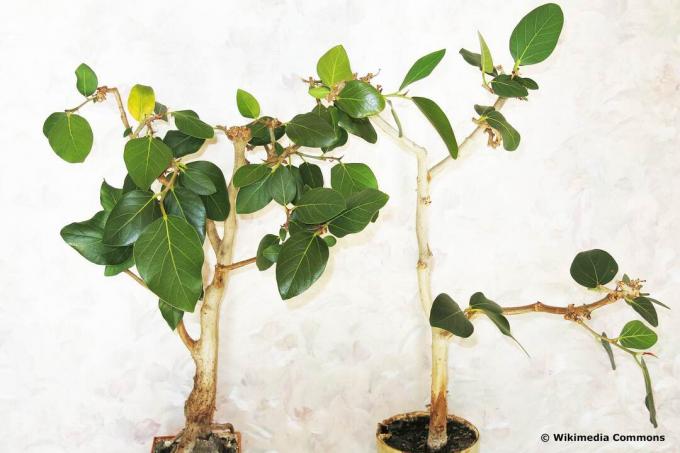
- upright growth, up to 200 cm high, growth up to 35 cm
- Leaves rich green, leathery
- young leaves and twigs reddish
- as an indoor tree usually no flowers
- bright location, temperatures between 18 and 30 degrees
Triangular ficus (Ficus triangularis)
Its unusual triangular, lightly variegated leaves make this lesser-known fig species a real eye-catcher.
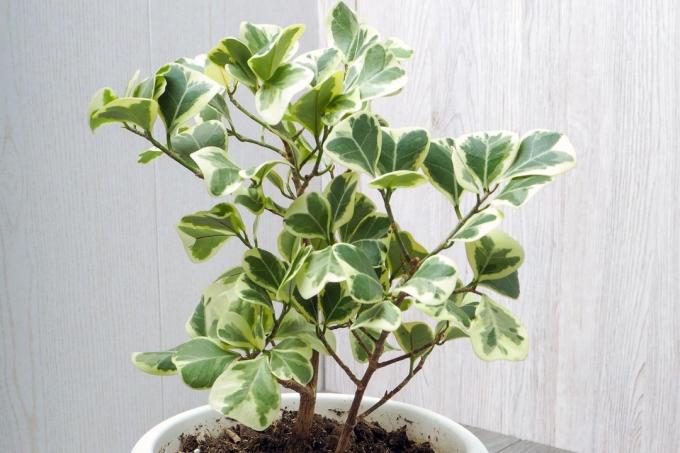
- Growth height up to 180 cm
- bright location without direct sun
- Room temperatures between 15 and 25 degrees
- not below 15 degrees
lucky chestnut (Pachira aquatica)
The most striking features of this tree are the large, palmately divided leaves and the mostly plaited trunk. The leaves form a regular crown.

- Growth height 100 to 140 cm, width 50 to 100 cm
- bright locations without direct sun
- year-round between 18 and 25 degrees
- Flowers rather rare
Mistletoe-fig tree (Ficus deltoidea)
Their trunk is comparatively thin. But the small, dark green, almost spoon-like leaves are all the more beautiful.
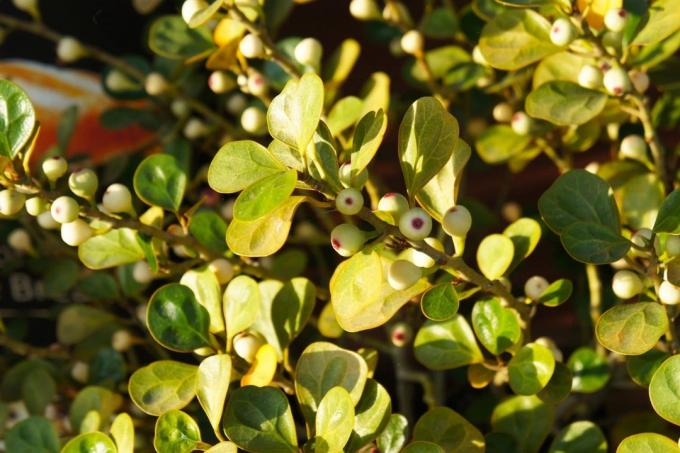
- about 150 cm high, 50 cm wide
- Growth of about 15 cm per year
- bushy, branched growth
- bright place with morning and evening sun
Mosaic fig (Ficus aspera)
This tree is relatively rare as a houseplant. Their greatest adornment are their strikingly variegated leaves.
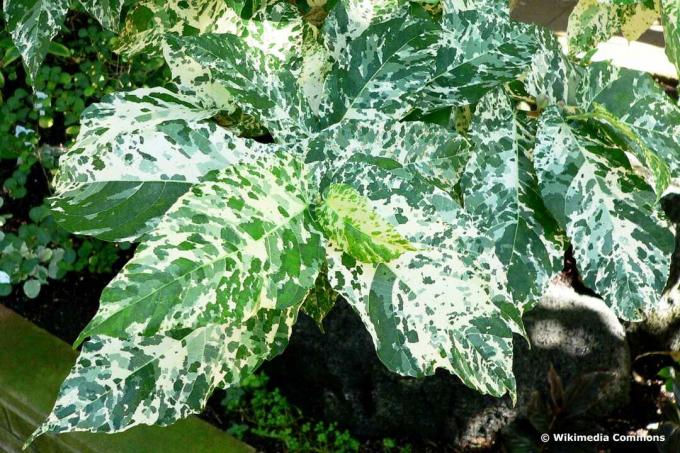
- upright, up to 200 cm high
- Leaves ovate, elliptical, marbled
- Houseplant with cherry-like fruits
- year-round temperatures of 20-23 degrees
- bright locations without direct sun
Orange tree (Citrus madurensis)
As a room tree, the calamondin orange conjures up Mediterranean flair in your home. It captivates not only with decorative foliage and beguilingly fragrant flowers, but also with decorative and edible small fruits.
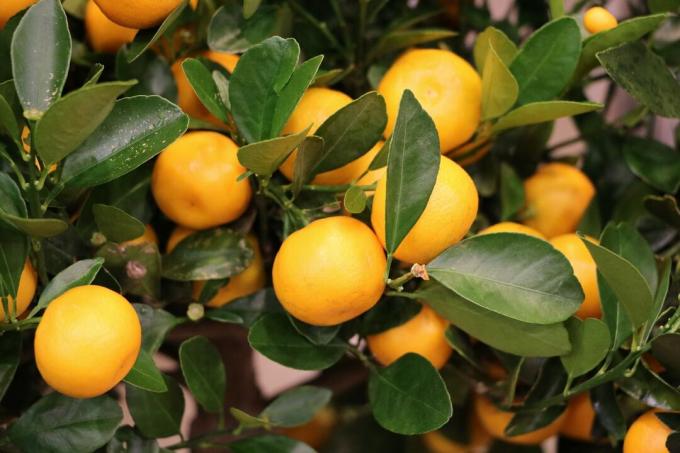
- Growth height maximum 200 cm
- from March fragrant white flowers
- full sun in summer
- autumn and winter five to ten degrees
- the warmer, the brighter the location
Room fir (Araucaria heterophylla)
With its frond-like twigs, symmetrically arranged branches and soft, needle-like leaves, this ornamental houseplant looks very elegant. However, their care is a little more demanding.

- rarely taller than 180 cm as an indoor tree
- about 50-100 cm wide, slow-growing
- thrives best in cool rooms
- shouldn't be too dark
Over 200cm
Balsam apple (Clusia major)
The balsam apple is not an apple and is not related to the rubber tree, as its leaves suggest at first glance.
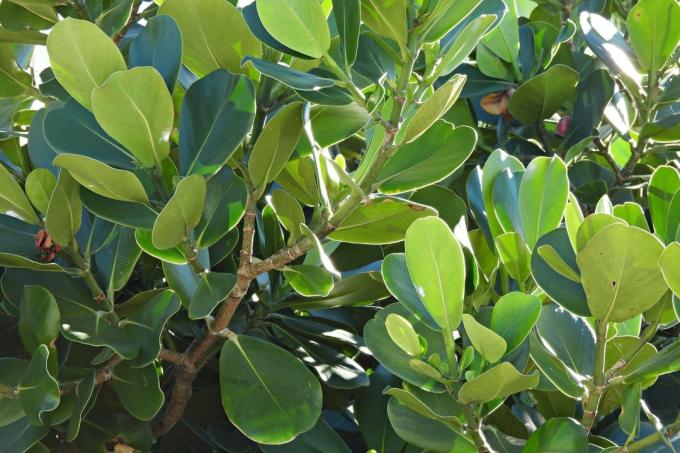
- up to 300 cm high and 200 cm wide
- comparatively high water demand
- year-round at least 15 degrees
- white or pink, funnel-shaped flowers in summer
birch fig (Ficus benjamina)
The birch fig is an extremely popular houseplant, regardless of whether it has green or light variegated leaves. In addition, this small-leaved fig species can improve the indoor climate.
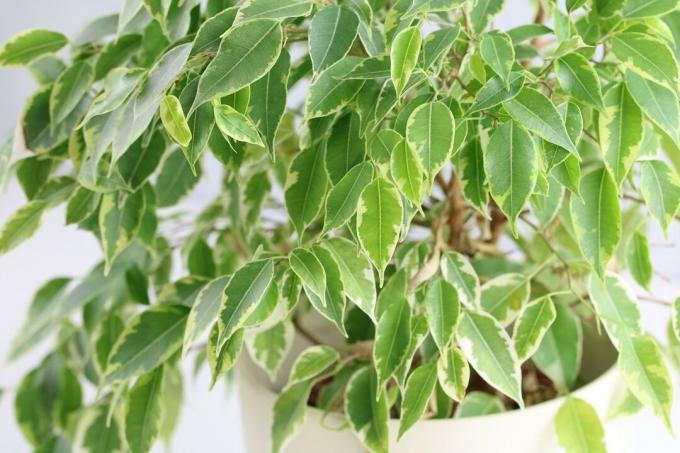
- up to 500 cm and higher
- Appropriate space and care required
- bright location with direct sunlight in the morning
- less due to lack of light in winter loss of leaves
Tip: Sudden temperature changes, drafts and changes of location should be avoided.
Fiddler Fig (Ficus lyrata)
The violin fig is a stately indoor tree. Its large, lush green leaves and picturesque growth make it a real eye-catcher.

- between 200 and 400 cm high, up to 100 cm wide
- grows upright and sprawling
- lighter leaf veins prominent
- semi-shady location, temperatures from 20 to 23 degrees
- in winter 16 to 18 degrees
Rubber tree (Ficus elastica)
It is a classic among house plants and is particularly popular for its large, glossy green leaves.

- up to 300 cm high, 150 cm wide
- high light, moderate water requirement
- avoid large temperature fluctuations and draughts
- not below 18 degrees in winter
Tip: The large leaves on this tree are excellent dust collectors. In order not to endanger the light absorption, regular dusting or showering is advisable.
Long-leaved gum tree (Ficus maclellandii 'Alii')
The long, overhanging leaves are typical of this tree as a houseplant. If she feels really comfortable in one location, she can reach stately heights.
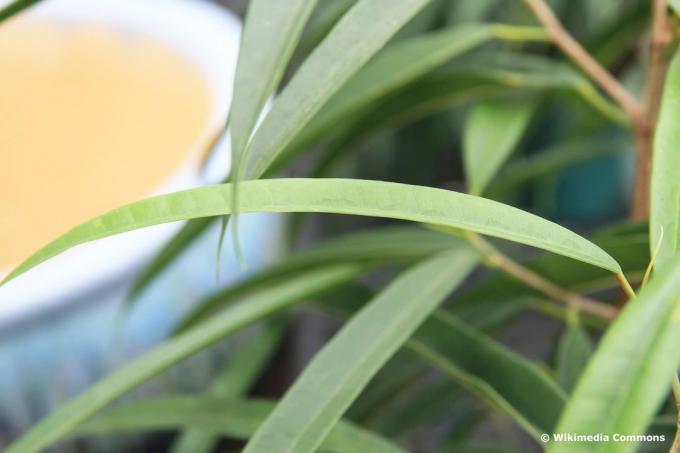
- between 200 and 300 cm high, up to 50 cm wide
- dark green, narrow leaves
- bright place with morning and evening sun
- adequate water supply, high humidity
Notice: This indoor tree is still often misnamed "Ficus binnendijkii".
room linden (Sparmannia africana)
This tree presents itself with dense green foliage and, under optimal conditions, with beautiful, exotic-looking flower umbels from November to May.
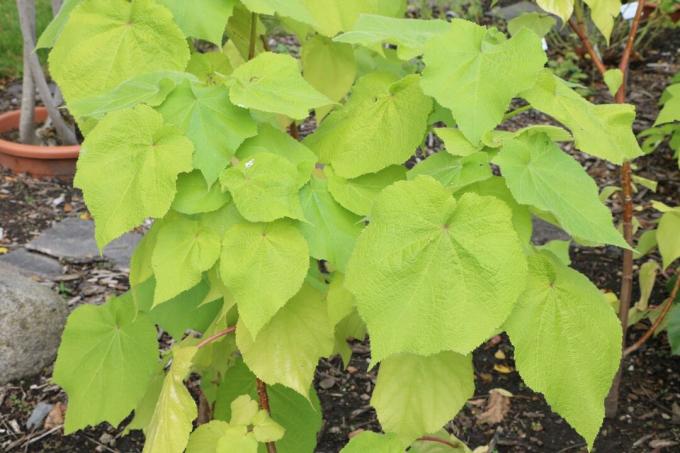
- depending on age up to 300 cm high
- up to 20 cm long, heart-shaped leaves
- possible year-round flowering at constantly cool temperatures
- between 10 and 15 degrees is optimal
Tip: The room lime has properties that improve the room climate and can increase the humidity due to its large leaf mass.
frequently asked Questions
Indoor trees can reach considerable proportions. As a result, one should consider final plant size, space requirements, and individual light requirements.
They can increase well-being, reduce stress, bind pollutants and provide oxygen and humidity. The visual aspect should also not be forgotten.
One should refrain if the conditions are unfavorable. Even with allergy sufferers, small children and pets, you should carefully consider whether you should only do without certain or generally indoor trees.


